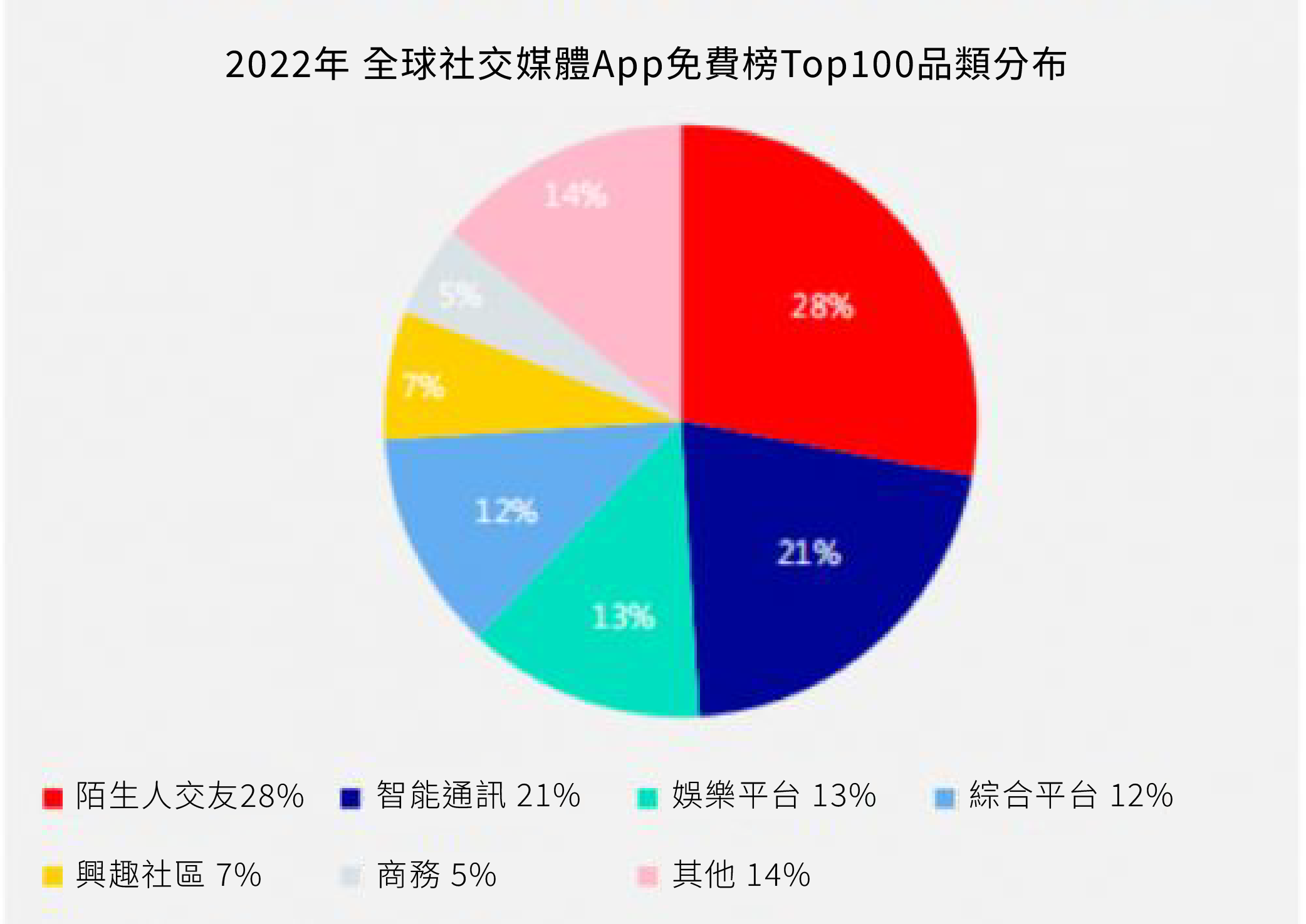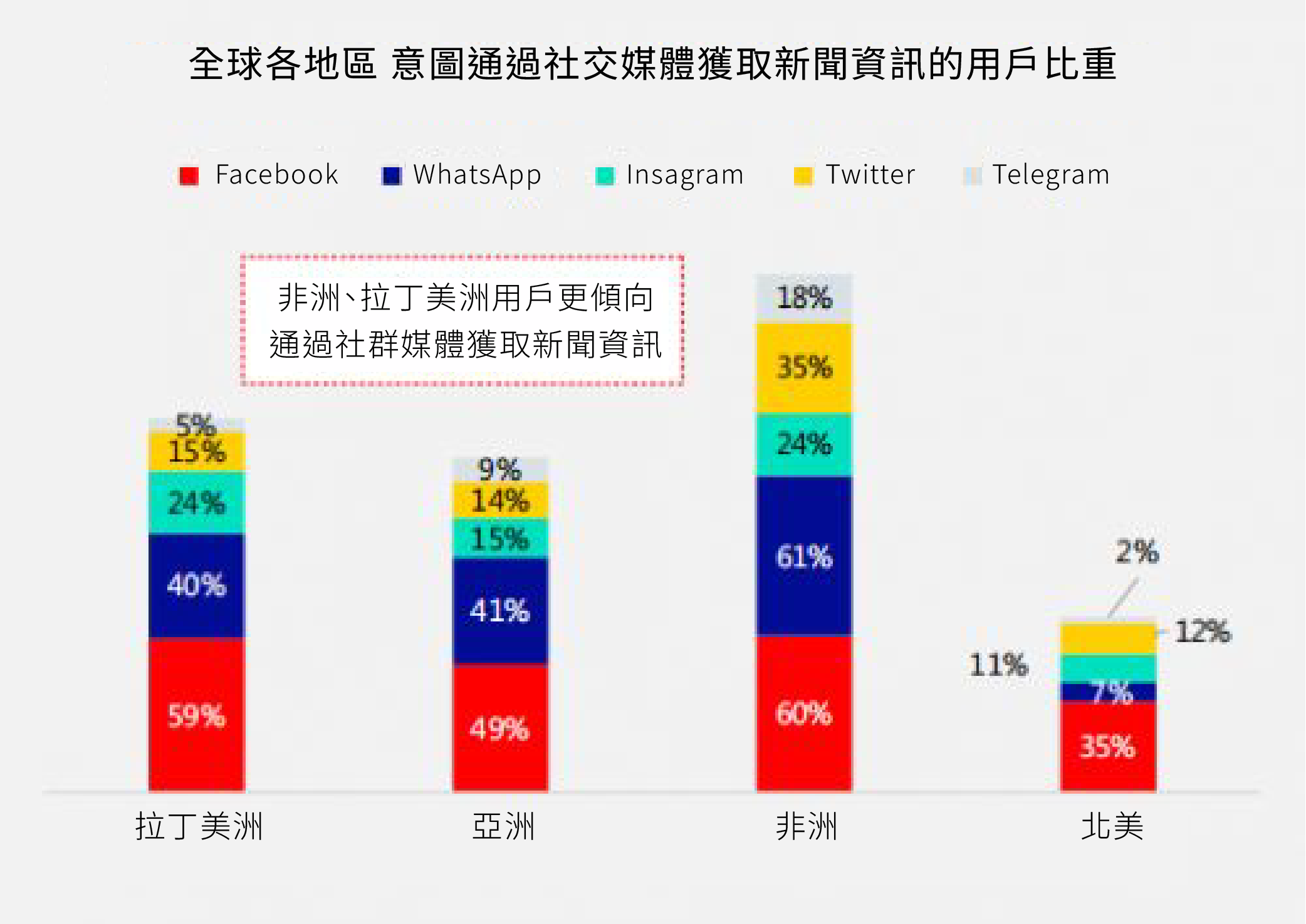2023-12-12
When launching a social media app overseas, how should one approach market expansion?
Accompanied by the development of the Belt and Road Initiative and the demand for enterprise expansion, an increasing number of companies are seeking overseas development. TikTok has also fueled the trend of social app internationalization. This article systematically analyzes the intrinsic logic and related issues of the internationalization of social apps. The content and data of this article are sourced from the “Global Emerging Market Mobile Applications Report” jointly released by Pangle and Easy Analytics.
The global social media average penetration rate is nearly sixty percent, indicating a diversified layout of social media products.
Except for some African and Western Asian countries with penetration rates below the average, the average penetration rate in major emerging markets has exceeded 70%. Latin America and Southeast Asia, in particular, have higher social media penetration rates, with user habits gradually formed and diverse product matrices deployed to seek the next growth point.
In emerging markets, the demand for social media apps in the community media category is growing rapidly.
In the past five years, the global market for community media apps has grown rapidly. Japan, South Korea, and other mature markets account for a stable share but remain the mainstay of the market (accounting for over 10%); whereas in the vast majority of emerging markets, the market share is around 3%-5%, but the download volume continues to rise, indicating rapid development in the exploration stage.
Looking at the national performance, the penetration rate of social media products in populous countries like Indonesia and in parts of Sub-Saharan Africa with high and rapidly growing youth populations continues to rise. For developers, it is crucial to combine local mobile usage habits and device/system types to develop product offerings, cater to local user needs, and focus on segmenting categories to seize market share.
The number of users using multiple platforms in emerging markets is higher than the world average, indicating greater development space.
Currently, the phenomenon of using multiple social media platforms simultaneously is quite common. According to age differentiation, the 16-34 age group is more accepting of simultaneous use of multiple platforms, with an average of over 8 social media platforms used per month.
In mature internet markets like Japan and South Korea, top social media platforms have higher market shares and comprehensive product functionalities, resulting in fewer instances of simultaneous use of multiple platforms. In contrast, social media platforms in emerging markets are still in the development stage, and users have higher acceptance of social media products derived from various segmented areas, indicating greater development space. Therefore, users in emerging markets use more than 8 social media platforms on average per month, higher than the global average.
Users in emerging markets have high entertainment demand, and user stickiness is far higher than the global average.
From a global perspective, users spend an average of 6 hours and 59 minutes per day on the internet, with social media (2 hours and 27 minutes) occupying a core position in users’ online activities, more than twice that of gaming categories.
Combining local characteristics, mature mobile markets like Japan and South Korea have richer entertainment content and more effective platform information, leading to shorter user spending time on social media platforms. In contrast, the lack of entertainment content in emerging markets has led to higher user stickiness for social media apps. Combined with the rise of current content formats such as short videos and live streaming on social media, entertainment social apps are developing rapidly in emerging markets, with greater market potential.
The combination of social media and various models continues to empower various industries.
01 User Attribute Analysis
Male users are more interested in game-related live streaming and interest platforms (with a proportion exceeding 60%), such as Discord, Bigo, etc. Female users, on the other hand, have a lower overall proportion (mostly not exceeding 50%) and tend to prefer content related to pictures and life sharing, with platforms like Pinterest having a proportion of over 60%.
In terms of age groups, the youth and middle-aged user groups occupy the main proportion. However, entertainment, interest, and social platforms tend to be younger overall, with this characteristic being more prominent in certain countries in Africa and the Middle East.


02 Category Preference Analysis
Stranger socializing apps are often ranked in the middle of the Top 100 list, indicating intense competition in markets like India, Brazil, Indonesia, etc. However, entertainment and interest-based community apps have a smaller proportion but most of them show stable growth in rankings.
According to keyword search statistics, vertically-focused social media platforms with strong functionality (such as user photo and video editing) are popular. Additionally, there is still a gap in social media products used in work settings; for example, online collaboration tools could significantly improve efficiency. With the rapid development of mobile internet in emerging markets, this area is worth developers’ attention.


03 User Behavior Analysis
- Integration of Social Media Categories Promotes the Development of E-commerce, Entertainment, and Information Industries
Overall, online communication, passing time, and browsing news are the main reasons consumers use social media. However, as user penetration rates increase, social media platforms are gradually becoming one of the main channels for promotion in industries such as e-commerce and gaming, highlighting the strong user stickiness and information advantages of social media.
- Social Media + E-commerce: Significant Conversion Rates in Emerging Markets from Information Acquisition to Stimulating Purchase Desire
In recent years, as social media users increasingly acquire information on platforms, the proportion of online purchases has also gradually increased. The unique social communities and information sharing attributes of social media platforms have long made them favored by advertisers. Official brand operations and KOL social media marketing have continuously empowered the e-commerce industry. In emerging markets such as Indonesia and Brazil, users have higher recognition of information on social media platforms, resulting in a more significant proportion of users converting to online purchases of products/services.
- Social Media + Video: Social Media Becomes the Main Channel for Entertainment Content Distribution, Further Enhancing Entertainment Attributes
Video content has a natural advantage in message delivery efficiency and wider audience coverage, quickly entering the top social media platforms and occupying a major share of content. With the current diversified entertainment demands of internet users and the rapid development of higher-quality internet services, short videos and live streaming content have entered social media platforms with higher user stickiness and larger user bases, occupying the main online spending time of users. In the future, the form of gaming + live streaming + stranger socializing will gradually rise, giving social media platforms stronger appeal in terms of entertainment content, posing a greater challenge to traditional platforms.
- Social Media + Information: Emerging Markets Are More Willing to Share Information Content on Social Media Platforms
Regionally, Latin America and Africa show higher levels of trust and willingness to share. Users in these regions have higher trust in entertainment news, with over 40% of users willing to share news information obtained from social media, far exceeding the global average of 20-25%.
For small and medium-sized enterprises, social + information is one of the main development directions at present. Products should focus on achieving entertainment functions while ensuring richness and timeliness of content. Additionally, there is still a significant market gap for vertical social information platforms due to strong user demand.


04 Mixed Monetization to Maximize Traffic Value
Over the past five years, the scale of advertising revenue on social media platforms and advertising costs has steadily grown. Considering the stable growth of revenue and per capita costs, the advertising placement model on social media platforms has become relatively mature. The user base of global leading social community products is extremely large, with in-app purchases being the primary revenue source. For users with low willingness to pay, unlocking certain features through watching incentivized videos, coupled with diverse secondary page layouts, interstitials, banners, and more entertainment features such as games, short videos, audio live streaming, can significantly increase user retention time and ad exposure opportunities.
In terms of ad placement, user experience should be the priority. Ads should be placed in major vacant areas to avoid obstruction and accidental clicks, ensuring the usability of the interface and functions. Customizing ad styles, categories, and formats based on product characteristics is essential, along with controlling ad duration and clarifying ad materials to ensure user experience. Additionally, testing and optimizing pricing strategies with and without CPM targets can achieve higher platform eCPM and fill rates, increasing user ad clicks and benefits.
Cross-border payments are indeed a crucial part of the sales chain for overseas social enterprises, directly determining the success of the entire business cycle. Unlike traditional cross-border trade, the payment landscape for social media overseas expansion features characteristics such as small amounts, high frequency, and diverse payment channels, posing new challenges to payment security and management.
For overseas enterprises, they also need to address overseas account management and cross-border settlement. The payment scenarios and chains involved are relatively complex, leading to increased payment risks. Therefore, ensuring the security of funds and payments is especially important for overseas enterprises.
To ensure the security of funds and payments, overseas enterprises need to take a series of effective measures. Firstly, they should choose reputable and compliant payment platforms and banks for cooperation to ensure the legality and security of payment channels. Secondly, they need to establish sound account management and auditing mechanisms to prevent non-compliant operations and fraud. Additionally, overseas enterprises should understand and comply with local laws and regulations to avoid fines or other legal risks due to non-compliance.
Furthermore, adopting multi-channel, multi-currency payment methods is also necessary. This not only meets users’ diversified payment needs but also reduces risks associated with problems in a single payment channel or currency. Moreover, overseas enterprises should establish comprehensive cross-border settlement mechanisms to ensure the rapid and secure flow of funds.
Lastly, for overseas enterprises, continuously monitoring market trends and industry trends is also crucial. With changes in the market and advancements in technology, new payment methods and risks will continue to emerge. Therefore, overseas enterprises need to maintain keen insights and flexible response capabilities to cope with the ever-changing market environment.
Danny, a senior project manager at AutoWebPay, a global payment platform, recently revealed an interesting and significant trend during an interview. As Chinese tech companies expand globally like mushrooms after rain, their emphasis on third-party payments is gradually increasing. Danny pointed out that this trend not only indicates companies’ demand for payment security, convenience, and diversification but also reflects their increasingly strong global vision and determination to integrate into local markets.
Research data shows that more and more overseas enterprises have deployed third-party payment channels. Particularly in the pan-entertainment/social industry, this percentage has reached 10%. While not low, it is significantly lower than the gaming industry, where the proportion of third-party payment channels exceeds 35%. Danny emphasized that this disparity is not because the pan-entertainment/social industry has lower demand for or less importance on third-party payments than the gaming industry, but because each industry’s pace of internationalization varies. He further explained that in the current market environment, the global process of the pan-entertainment/social industry has just begun, with considerable room for improvement in the future.
He believes that as the globalization process of these industries accelerates, the demand for third-party payment channels will continue to grow. This will not only provide more business opportunities for payment channel providers but also promote deep integration and mutual assistance among various industries.
Danny concluded by stressing that third-party payments are no longer exclusive to gaming, interactive entertainment, or social app fields. In the future, more and more overseas enterprises will recognize the importance of third-party payments and actively deploy this strategy. He predicts that in the near future, third-party payments will become as popular and normalized as Apple Pay and Google Wallet are today, and more new and innovative payment methods will emerge.






Report from: CIIC



© Copyright 2015 – 2024 | Auto Web Pay USA | All Rights Reserved






Report from: CIIC
© Copyright 2015 – 2024 | Auto Web Pay USA | All Rights Reserved


